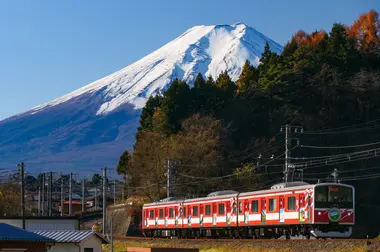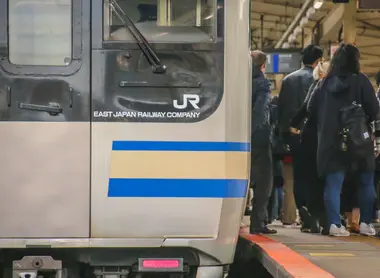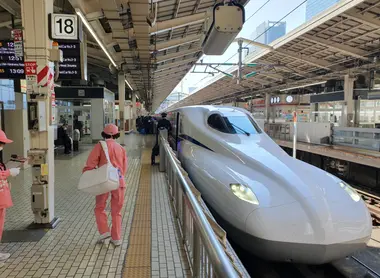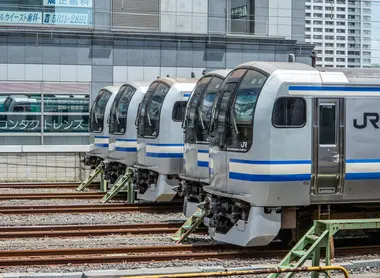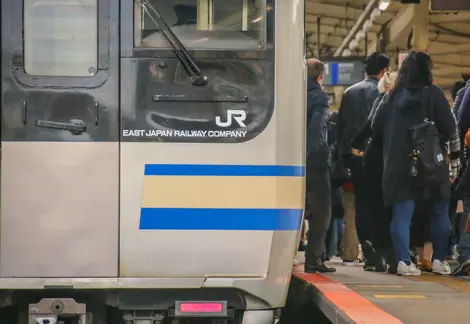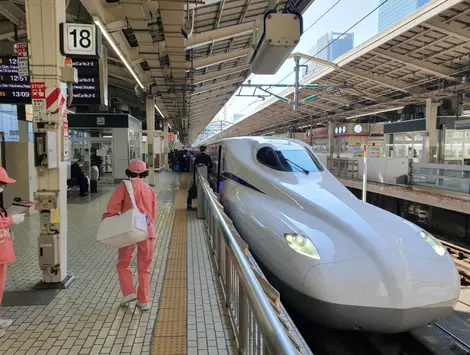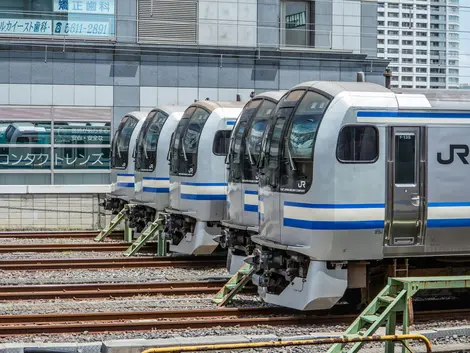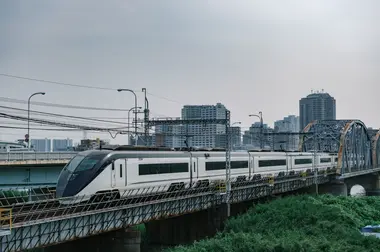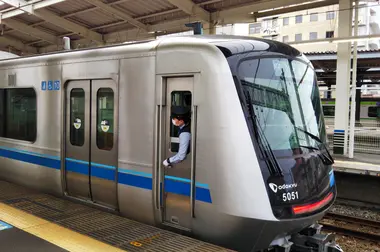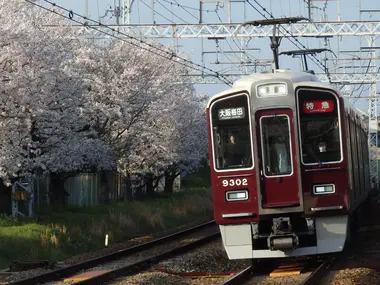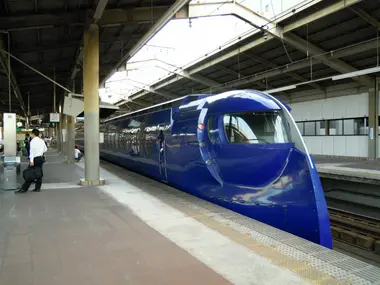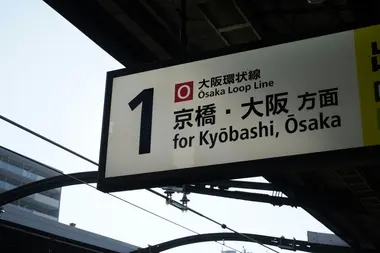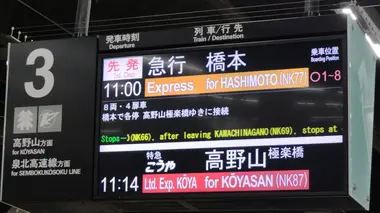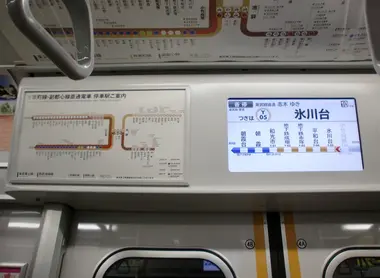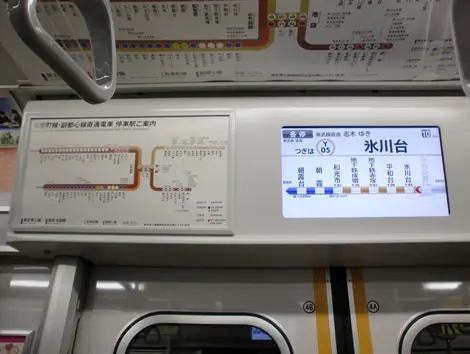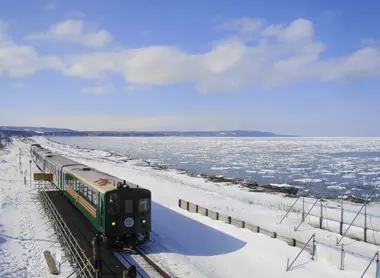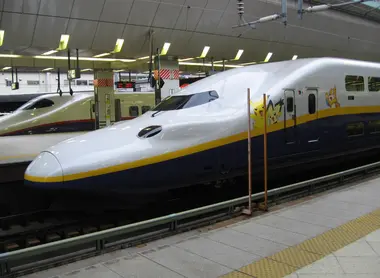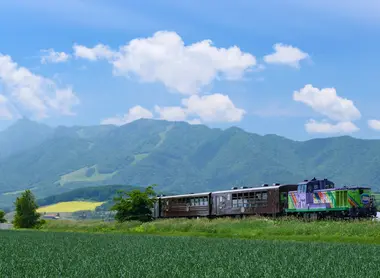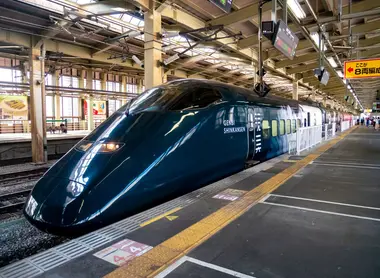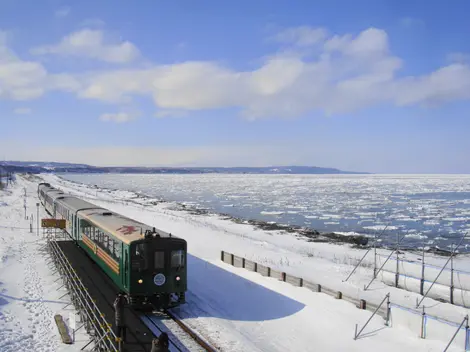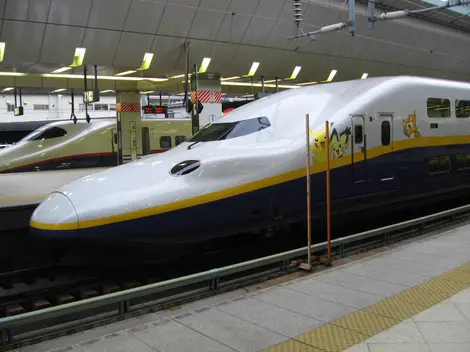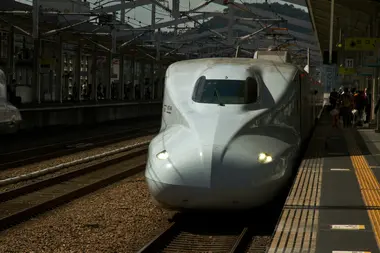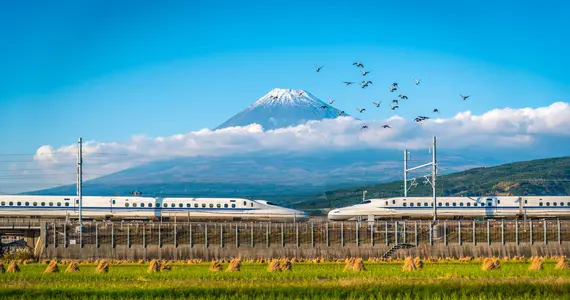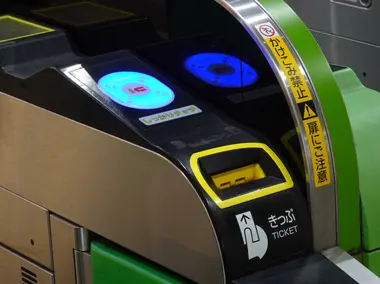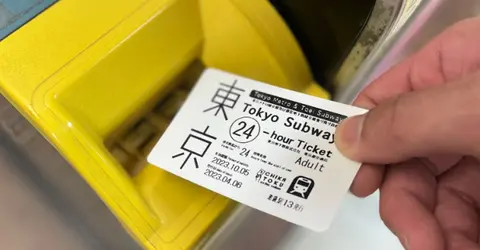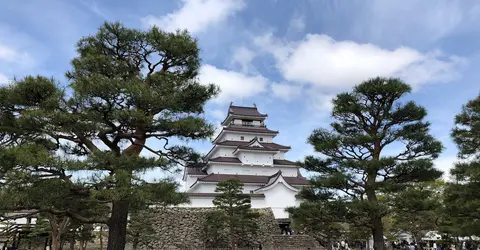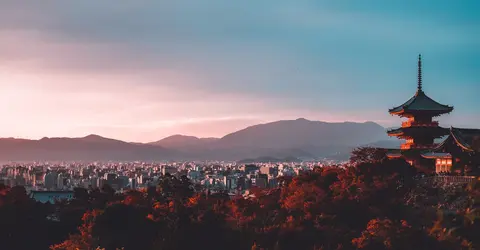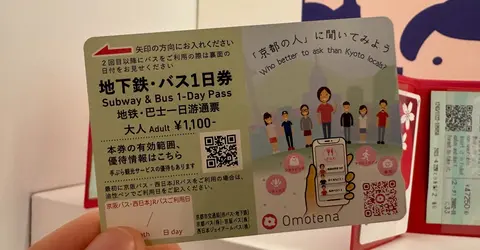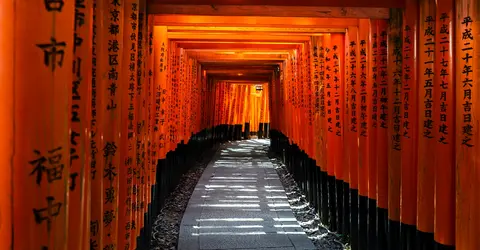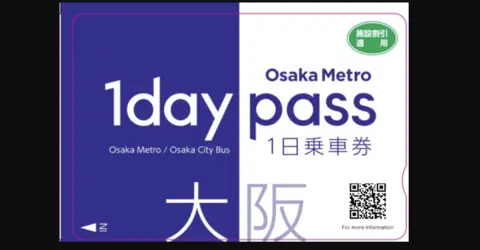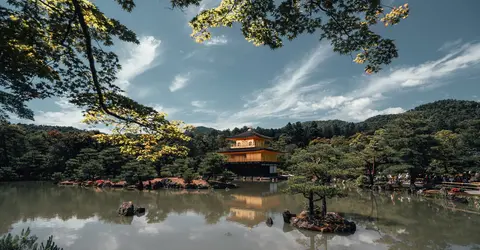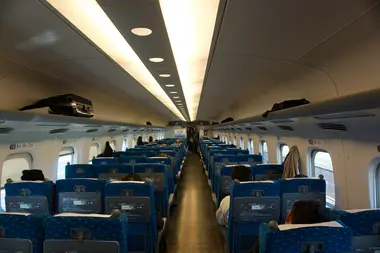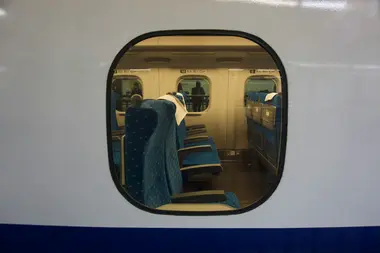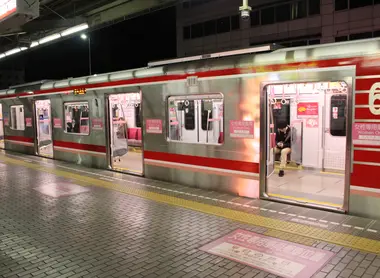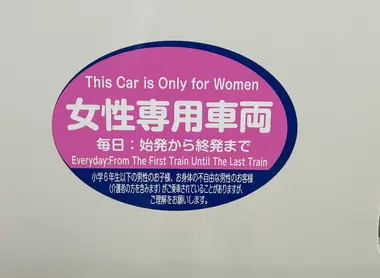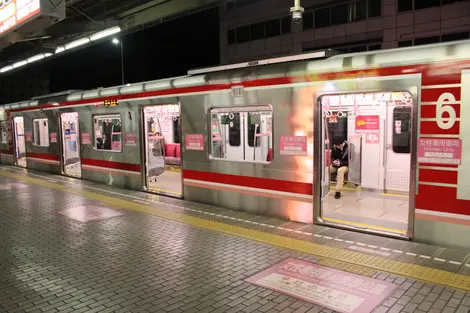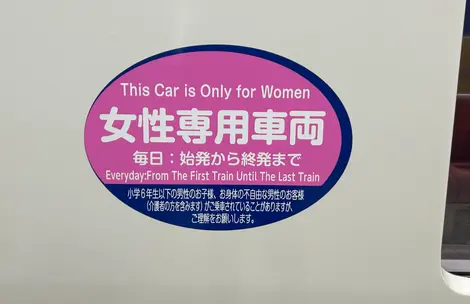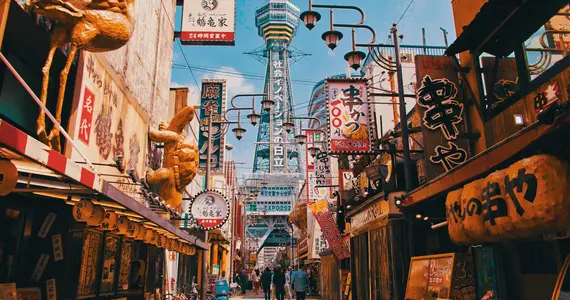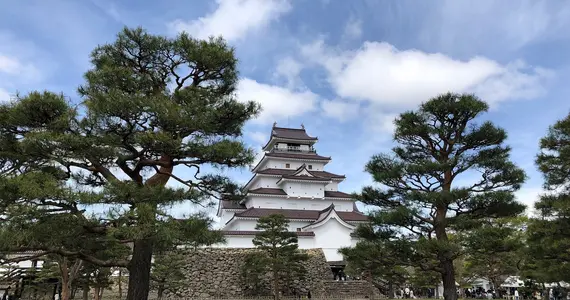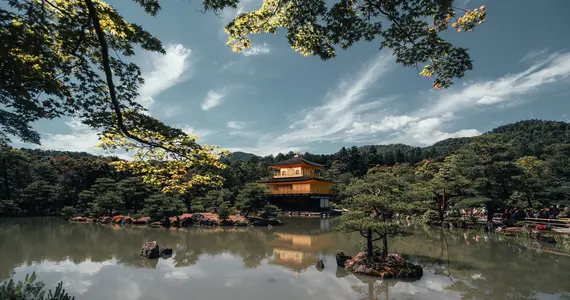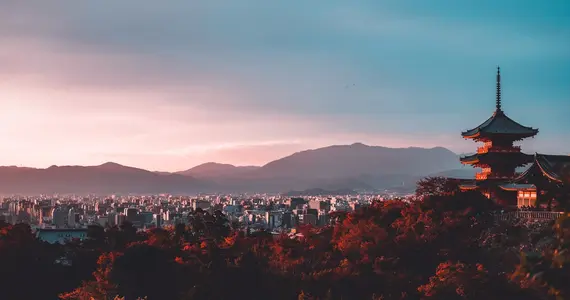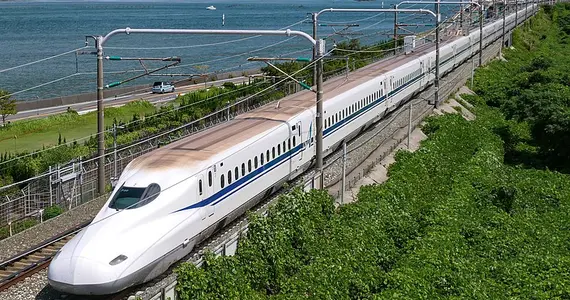Taking the train in Japan
Our top tips for train travel in Japan
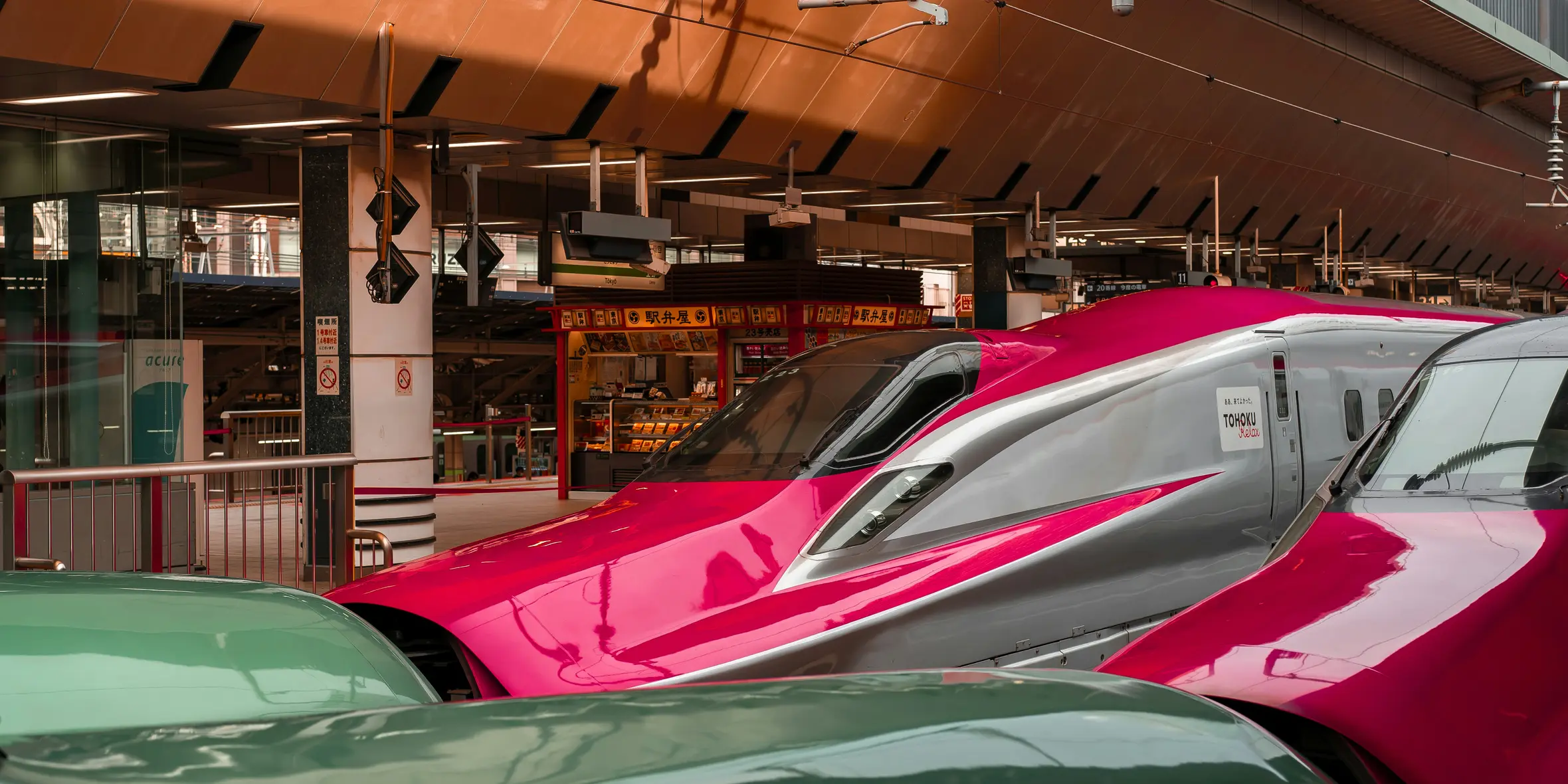
Travelling in Japan by train
With nearly 27,000 kilometers (16,700 miles) of track, trains in Japan are an institution! We'll tell you all about Japanese trains!
The train is by far the easiest way to get around Japan. The service is punctual, fast, and very pleasant aboard Japanese railcars. What's more, the rail network is extremely well-developed, making Japan one of the world's most renowned countries for the quality of its trains and its impressive number of stations (over 8,000), not the least thanks to its Shinkansen high-speed train, one of the fastest in the world, which serves the archipelago's biggest cities, from Kyushu to Hokkaido.
Japanese trains are also known for their scenic routes (Romantic Sagano Line, Train Ruyhyo Norokko...), or for their futuristic and fun designs (the Maglev, Shinkansen One Piece...). In short, trains are an aspect of Japanese culture in their own right!
Since you're bound to take a train during your trip, this guide will explain the essentials of train travel in Japan.
Contents :
- The train system
- Train types
- How to take the train
- Seat types and classes
- Timetables and routes
- On-board etiquette and advice
The Japanese train system
Japan's railway system can be complicated to understand! It's made up of various private companies that own one or more lines of varying length. In Japan, you pay for your train journey according to the distance you cover. Each company chooses its price according to distance, which is why two lines with a similar route do not cost the same depending on the line. For example, to go from Osaka to Kobe, taking the Hankyu Kobe Line costs 330 yen for a 35-minute journey, whereas with the JR Kobe Line, you need to spend 420 yen for 25 minutes.
Railway companies are divided into four groups, in order of importance:
- The Japan Railway Group, or JR group comprises 7 companies covering the entire archipelago (not including Okinawa). These correspond to the seven regions of the main island. These are JR Hokkaido, JR East, JR Central, JR West, JR Shikoku and JR Kyushu. This company alone accounts for 70% of Japan's rail network. JR Group manages the Shinkansen.
The main railway companies (oteshitetsu) number fifteen (sixteen if you include the Tokyo metro) and are Japan's most important and widely-used local lines. There are seven in Tokyo to the suburbs:
Tobu
Seibu
Keisei
Keio
Tokyu
Keikyu
Odakyu leading to Hakone.
Kansai (Osaka, Kobe, Kyoto, Nara...), one of the regions where JR has the smallest presence, has five:
Kintetsu
Nankai
Hankyu
Hanshin
Keihan
Kansai's regional passes are therefore very practical, as they often cover several companies, like the Kansai Railway Pass.
In Kyushu, you'll find the Nishitetesu company, in Kanagawa the Sotetsu company and in Nagoya the Meitetsu company. It's worth noting that some companies own several railway lines, such as the Odakyu company, which owns the famous Hakone Tozan Line leading to the heights of Hakone.
It's the lines of these two groups that you'll come across most of the time, since JR covers almost three-quarters of the rail network, and the rest of the most important lines are in tourist areas such as Osaka, Kyoto, and Fukuoka.
Regional Railways (Jun'oteshitetsu) are smaller companies than those mentioned above, but still serve a large number of passengers on one or two local lines. Some of these companies will merge with one of the fifteen major railroads in 2025, such as Shin-Keisei with Keisei, or Senboku Rapid Railways with Nankai. Other regional railroads include Kita-Osaka Kyuko Railway, Sanyo Electric Railway and Kobe Rapid Railway.
Finally, there are a large number of smaller, semi-public railway lines. These include the Ise Line around Ise, and the Isumi Line to Chiba. You won't come across them very often, because of their locality and the few stations they serve.
Each line has its own color and abbreviation, usually one or two letters, such as HK for the Hankyu or JY for the JR Yamanote. This makes it easier to find your way around stations by following the signs, or to know which line you're on!
Types of trains in Japan
To get to your destination, you'll find several types of train, travelling at different speeds. The speed of a train influences its name. In order of speed, from fastest to slowest :
- Shinkansen (新幹線)
- Limited Express (tokkyu, 特急)
- Express (or kyuko, 急行)
- Rapid (kaisoku, 快速)
- Local (futsu, 普通)
The Limited Express, Express and Rapid make the same journey as a Local, but do not serve all stations. So always check your itinerary to find out which type of train to take. Note that these four trains board on the same platform, whereas the Shinkansen often has its own platform and station, recognizable by the "Shin" prefix in front of its name. For example, when you arrive from Tokyo to Osaka, you arrive at Shin-Osaka, the station specific to Shinkansen. These stations are always connected to the city center by other train lines or subways.
The names of these trains may differ depending on the company operating them. To find out more, click here: From Limited Express to local train | Japan Experience
Tips :
- Look at the departure time of the train you want to take to get your bearings on the display screens, even when they're in Japanese.
- To go as fast as possible, first take an express train to the nearest destination, then a local train, which will cost you the same.
- Several trains of different speeds may leave from the same platform, so be careful not to board at the wrong destination. Look for the arrows indicating which platform your train is on.
Special case: Sometimes you'll see the line change color on the screens in your train.
The train will actually continue on another line. There are interconnections between lines.
For example, you want to get from Kansai airport to Tennoji station in Osaka. You hop on the Kansai Airport Line (blue) at Kansai Airport station. For about 10 minutes, you're still on the Kansai Airport Line, then, as you reach Hineno station, the line on the screen turns orange and is now called JR Hanwa Line. So if you're going to Tennoji station from the airport, you'll be taking both the Kansai Airport Line and the Hanwa Line on the same train! The train always makes an extended stop at the station where the line stops, in this case Hineno (about 10 minutes), but it's the same train that runs both lines. But don't panic, as long as the line goes to your station, you don't have to move!
Special trains and the Joyful Train
Japanese trains are sometimes decorated with the effigy of your favorite pop culture characters, or to mark a special event! There are Shinkansen and Pikachu trains, Monkey D Luffy trains, Hello Kitty trains, and Osaka subways in the colors of the2025 World Expo.
There are also "Joyful Trains", operated by the JR company, which have special designs and pass through some of the archipelago's most beautiful spots! There's even a luxury train called the Twilight Express Mizukaze, where the journey lasts three days and you get ultra-high-end service.
How to take the train
Japanese train tickets
There are several types of ticket for taking the train in Japan.
The JR Pass:
The Japan Rail Pass, reserved for foreign travelers, can be used to navigate on all JR lines throughout the country (Japan's main train company), including via Shinkansen, the high-speed trains! It comes in 7, 14 and 21-day versions, and you'll also find a JR Pass Green for first class (Green Car). You can choose to reserve your seat, or simply board an unreserved seat car on any JR train! Otherwise, seat reservations are free with this pass, giving you great flexibility in your travels and ensuring you get on a train at the time you want!
If you're visiting a particular area of Japan, opt for a regional JR Pass, which covers only part of the territory and is more affordable!
Choose the Japan Rail Pass and travel with ease!
You can purchase individual tickets for your Japan itineraries. These tickets can be purchased before you leave for Japan, and some Shinkansen routes even offer e-tickets to make your journey easier. This means you can avoid the long queues at Midori no madoguchi (JR ticket offices) in stations. You can order your tickets here: All our train itineraries in Japan | Japan Experience you can even book a seat with a view of Mount Fuji!
The Suica, Pasmo or ICOCA are all prepaid smart cards that allow you to take any train, regardless of the company (JR, Keisei, Hanshin...) except Shinkansen and limited express trains. The IC card, essential to many travelers, but also to the Japanese, offers you the possibility of traveling extremely easily within Japan's cities. All you have to do is top it up with a certain amount of money, validate it at the gates and that's it! There's now an e-Suica on iPhone, which lets you validate using your phone.
- Local and regional passes
As Japan is a country that's particularly easy to visit by train, you'll find many passes that last a few days. We recommend this type of pass when you're traveling within a city for several days, as it can be more cost-effective than paying for individual trips! For example, you have the Kansai Railway Pass which covers trains (not JR) from Himeji to Kyoto, via Osaka and Nara. There's also the Tokyo Subway Pass, which gives you access to all the Japanese capital's subway lines, the Kyoto Bus & Subway 1 day Pass and the Osaka Metro Pass.
You'll also find a number of regional passes that cover large areas and are very practical if you're traveling between several cities in one region of Japan, such as the North Kyushu Pass or the JR Hokkaido Pass.
Choose one of these passes for your trip to Japan:
Tips :
All these passes can complement each other! You can take a JR Pass for all your major journeys and on JR lines, and complement it with a Suica card for all journeys that are not valid with the JR Pass. Similarly, if the national JR Pass is not optimal for your trip, opt for a Suica card and individual train tickets!
Is it expensive to take the train in Japan?
The train is not the cheapest means of transport in Japan (night buses are cheaper, for example), but it is the most convenient and comfortable.
The cost of a train ticket is often made up of two parts:
- The cost of the train journey, which is fixed. This is the basic fare on the line you are traveling on. The cost depends on the distance traveled.
- The additional cost - choice of seats, express train : this varies according to the specific options available on the line. Express trains are more expensive, as is the type of seat selected (see section Seat types and their cars).
Reduced fares for children:
In Japan, reduced fares are available for children under 12:
- before the age of 6, children don't need to pay a ticket if they don't need a seat (if they sit on the lap of a ticketed companion). Please note that this is limited to two children per family, so you can't reserve a seat for them unless you pay for a child's ticket.
- children aged 7 to 12 are entitled to reduced fares (the JR Pass is half price). This is also limited to two children per family.
Seat types and classes
Seat types and their cars
In Japan, you'll find two types of carriage on certain trains (limited express and Shinkansen).
- Cars with non-reserved seats: Here, you have no assigned seat, and can sit anywhere in the car.
- Reserved-seat cars: When you buy your ticket, you'll be given a car and seat number. A reserved seat is more expensive than an unreserved one, but you're sure to get a seat on the train at the time you want.
To reserve a seat, head for the Midori no Madoguchi (JR ticket office), a counter symbolized by a green logo with a man in white sitting on a seat. There, you can buy an unreserved ticket, or reserve a seat in the "reserved / shiteiseki" section of the train. With the latter, you'll be assigned a seat number and rank in a car with a reserved seat.
Car classes on Japanese trains
There are three types of car on Shinkansen trains.
The Ordinary Car corresponds to second class, the Green Car corresponds to first class and the Gran Class Car is a luxury first class only available on certain Shinkansen routes and models. Reservation of seats in the Green Car or Gran Class is compulsory, unlike some Ordinary cars, where you can sit without reservation.
Train schedules and itineraries
To build itineraries and find train timetables in Japan, the best tools are Google Maps, Navitime and Japan Transit Planner (Jorudan). To find the train(s) you need to travel from one point to another, simply enter your departure station, arrival station and desired departure time.
Train etiquette and tips
Like many aspects of Japan, trains have their own particular organization. Here are a few tips to familiarize you with train travel.
- Special cars and priority seating
In Japan, there are several types of special carriages and priority seats. Don't get into the women's carriage if you're not a woman (the platform will be marked "Boarding point for women only" on a pink pavement marker), or into the "electronic off" carriage with your cell phone switched on, as phones interfere with other passengers' pacemakers.
Priority seats are clearly marked with pictograms representing pregnant women, people with small children and the elderly. Don't sit in them, even if they're busy.
- Rules of etiquette
On trains in Japan, don't eat (except on Shinkansen trains), don 't telephone and don 't speak loudly. In addition, mute your phone or wear earphones or headphones when listening to music.
Try to follow the directions given to you as closely as possible. For example, follow the floor markings (often O or △) that indicate the entrance to the carriage corresponding to your train on the announcement screen. In all cases, queue to wait or to enter the train.
⇒ Find out more about the rules to follow on a train in Japan: Japanese train rules to follow | Japan Experience
- Luggage on trains
Another thing to be aware of, especially on public transport, is that you shouldn't take on too much luggage. Don't hesitate to use luggage transport services such as Takkyubin. These can move your luggage from one point to another and hold it for a while: say, for example, you're taking a trip to Kanazawa on your way from Tokyo to Kyoto. Thanks to Takkyubin, you can have your large suitcase delivered to your hotel or home on the day you arrive in Kyoto, and leave for Kanazawa with a light heart and a light bag.
The official Shinkansen rule allows each passenger 2 suitcases (maximum weight: 30 kg). The total height, width, and depth of the luggage must be less than 250 cm, and if it exceeds 160 cm, you'll need to reserve a storage space. Note that these spaces are located at the back of the seats at the end of the row, so don't hesitate to ask for a seat at the back of the car if you book a seat to be next to your luggage. Go here to find out more about reserving luggage space on Shinkansen trains: New Shinkansen luggage reservation rules.

